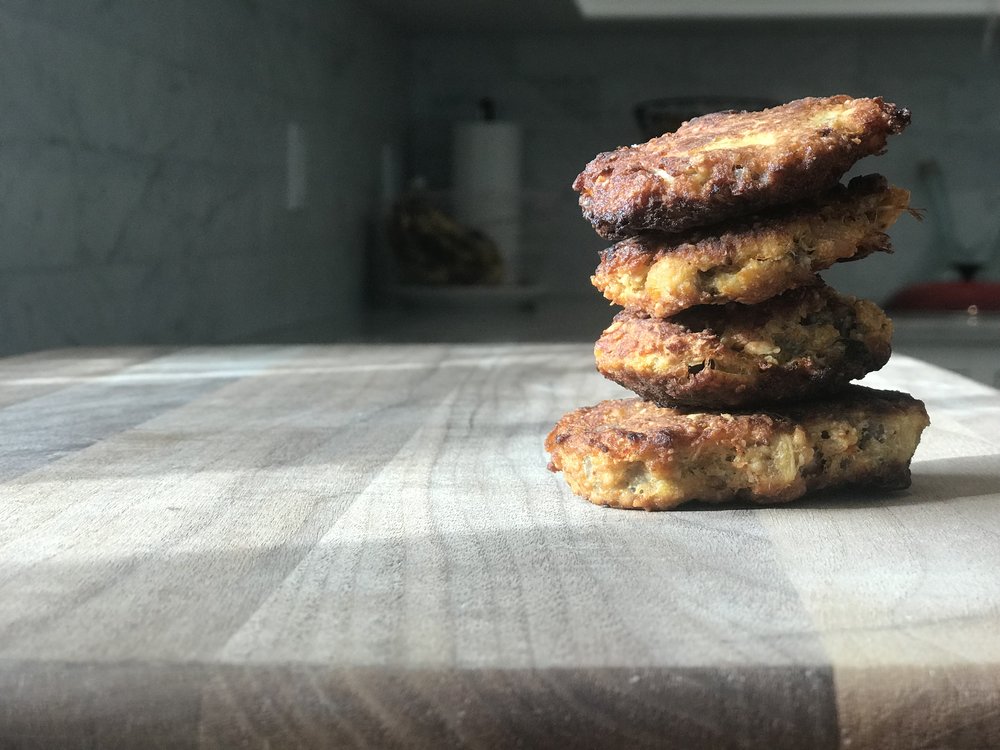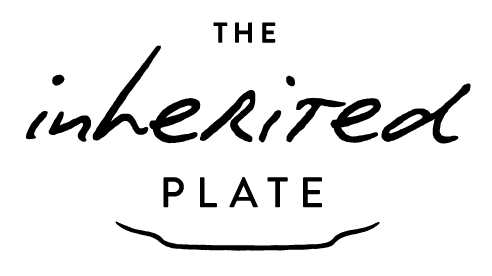The best latkes made from soup vegetables

The eastern European Jews had an exuberant talent for pickling and fermentation including making their own cheese, sour cream, and assorted pickles (See Jeff Yoskowitz and Liz Alpern’s rich and exciting cookbook, The Gefilte Manifesto and Gefilteria classes and culinary experiences) This was a means of preservation. They, like their Italian and other european neighbors, had to stretch and stretch those ingredients and food to make them last a few meals, especially throughout the harsh months when food for their family was scarce.
Liz Rueven of Kosher Like Me recalls her grandparents who emigrated to the United States from Poland.
Her grandmother, Bertha Scher, who was illiterate her entire life, was an ingenious cook. In fact, Liz wrote an amazing piece about her called vegan before her time, which illustrated the way in which her grandmother creatively cooked for grandchildren who had dairy and egg allergies and kept all of her information and recipes stored in her mind.
While shooting a video together a few years back, Rueven recalled that on many Friday Shabbat dinners, her grandmother would cook a chicken soup. Having the chicken on the sabbath was an occasion for celebration, typical of poorer families, but also families of means, who saved their meat for Friday nights. You’ll often see kosher families have a fleishig or meat dinner on Friday evening. Meat as a blood sacrifice was not something to be taken lightly so it wasn’t just about culling resources for the week to make the sabbath night special, but that you saved the sacrificed animal for the holiest of days (whereas, a lunch or weeknight meal would often be meatless or dairy/fish meal called milchig).
“My grandmother never threw anything away. For example, she would take her chicken soup vegetables, mash them up, form them into little pancakes, and fry the latkes to make en entirely new meal.”
As I reviewed the footage recently, this idea Liz shared intrigued and inspired me this Hanukkah. So on the first night, I made a chicken stock. In a tall pot, I boiled chicken carcassses, from which we had eaten chicken earlier in the week. I added a whole halved cabbage, onion, dill on the cusp of wilting(stems and all), a few different kinds of potatoes, carrot, celery and some fresh turmeric root.
As I made latkes for that night, I added onion peel and bits, the parnsip that I’d partially grated for a root vegetable latke, throwing it all into the soup pot. Everything went in including some chicken necks and backs I’d butchered and frozen from earlier weeks. From this, I yielded 8 quarts of stock, some bits of long simmered chicken meat pulled from the bones to feed my dog (why shouldn’t he benefit?) and with the leftover vegetables I made the following the next day:
I discarded the celery and herbs. I chilled down the cabbage halves overnight. I made brown butter roasted cabbage (seasoned with some salt) at 400 degrees F, brushing the halves every 10 minutes with the brown butter.
Once golden, I served them simply with some la tur cheese on the side. The simmering in chicken broth from the night before made the cabbage incredibly soft and imbued with umami flavor of the chicken. The creamy la tur cheese which has a particular funk and oozy texture made this totally humble vegetable newly sexy, every bit, melting perfectly in your mouth.
I then took a nod from Liz’s story about her grandmother and peeled the cold potatoes and mashed them with a fork, together with carrot and parsnip. I eyeballed them and folded in an egg, a few tablespoons of matzoh meal, salt and pepper. Flecked with orange from the carrot and blue from the Adirondack purple potatoes, I formed the mix into little patties, covered and chilled until dinnertime. Before dinner, I heated up some canola oil in a heavy bottomed le creuset pan When very hot, I added the latkes to pan (they should sizzle immediately) and fried until deep golden on both sides.
These deeply satisfying root vegetable pancakes had already sopped up all the flavor from the broth, and the promise of Liz’s grandmother was there- two whole new delicious dishes to be enjoyed from the master recipe. Nothing wasted, nothing boring, next night’s dinner came entirely from the prior evening. The satisfaction you get as a home cook in knowing that there are little gems to be found in what one already has is priceless. It is the unique energy of improvisation that makes cooking so exciting. Keeping those traditions alive and sharing these oral histories with our kids while they are in the kitchen with us is a way to continue not to waste, to make the most of what we have and to remember the past.
Serving Size: Makes about 12 cocktail size latkes
Ingredients
3 cups of mashed assorted root vegetables and potatoes*, pulled from a homemade chicken and vegetable soup, cooled down overnight(make sure there aren’t any extra soup juices on the plate and remove potato peel before mashing. they should be chilled overnight, air drying in the fridge)
Kosher salt and freshly ground pepper, to taste
1 egg
1/4 matzoh meal
Canola, Vegetable or peanut oil
Instructions
Place the ingredients in a bowl. Using a fork, mash together until well mixed. Form little patties (I like them small cocktail size) and transfer to a plate. Cover with plastic and chill. They should form together fairly easily.
Heat a heavy bottom skillet such as a le creuset or cast iron skillet (if you have a nonstick, that would work too) with a good amount of oil. There should be enough to shallow fry the latkes. Do not skimp and do not crowd.
Bring the heat up until the oil is very hot and fry until deep golden and crusty. Test one latke first-it should sizzle when it hits the pan. Flip and do the same on the second side. Transfer to a paper towel lined sheet tray, plate or rack. Taste for seasoning and sprinkle on any salt if needed.
For a great master broth recipe, click here
Cook's Notes
Cook’s Note: I used potato, parsnip and carrot. I find it’s best to use at least half potato in the ratio as the starches in the potato help to bind the latkes together
